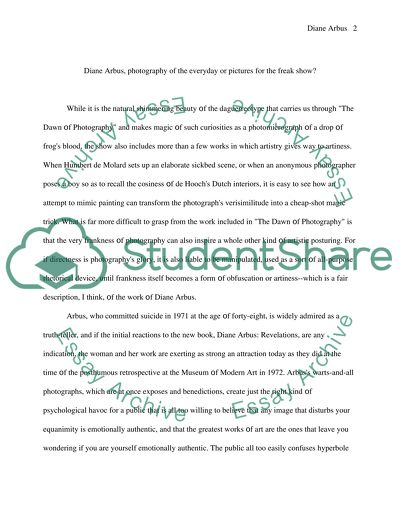Cite this document
(“Diane Arbus, Photography of the Everyday or Pictures for the Freak Literature review”, n.d.)
Diane Arbus, Photography of the Everyday or Pictures for the Freak Literature review. Retrieved from https://studentshare.org/design-technology/1509361-photography-master-essay
Diane Arbus, Photography of the Everyday or Pictures for the Freak Literature review. Retrieved from https://studentshare.org/design-technology/1509361-photography-master-essay
(Diane Arbus, Photography of the Everyday or Pictures for the Freak Literature Review)
Diane Arbus, Photography of the Everyday or Pictures for the Freak Literature Review. https://studentshare.org/design-technology/1509361-photography-master-essay.
Diane Arbus, Photography of the Everyday or Pictures for the Freak Literature Review. https://studentshare.org/design-technology/1509361-photography-master-essay.
“Diane Arbus, Photography of the Everyday or Pictures for the Freak Literature Review”, n.d. https://studentshare.org/design-technology/1509361-photography-master-essay.


